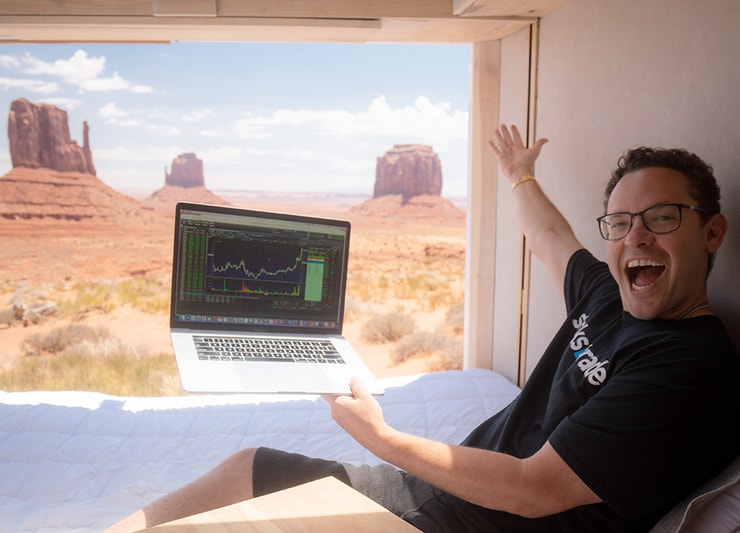We’ve already seen a lot of big stock spikes this week.
But the strongest momentum continues to come from the AI sector.
There are examples from earlier this week in this blog post.
And today I’m adding two more tickers to the list …
- A former 180%* runner spiked 60% on Wednesday after it announced a new CEO to help expand its AI operations.
- And a stock that already spiked 90% after announcing a $2.1 million contract to deploy an AI system within the contractor’s semiconductor-manufacturing operations.
These stock spikes are NOT random.
My students and I use popular patterns to trade the hottest moves in the market.
For example, watch the livestream below from Wednesday as two of my millionaire students analyze the market’s biggest runners:
I can teach you how to trade the biggest spikes in the market.
And it starts with the right stocks …
New AI Stock Spikes

2025 Millionaire Media, LLCWe see a few of these spikes every week in this 2025 market.
Cheap stocks love to announce AI news in hopes to capitalize on the overall momentum.
Here’s my key make gains from the volatility:
Wait for the best setups. And don’t overstay.
These stock spikes will ultimately fail.
These are generally crappy companies that only have an interest in pumping their share price.
But before the stock fails, the extreme hype creates profit opportunities that follow popular patterns. Patterns that I’ve used to profit $7.9 million (including losses).
For example …
On Professional Diversity Network Inc. (NASDAQ: IPDN) from Wednesday, the price action gave us a classic breakout setup during premarket hours.
This is the former runner that announced a new CEO to help expand its AI operations.
On the IPDN chart below, you can see the price spike and the volume increase toward the breakout level.
Every candle represents one trading minute:

There was 12% of upside after the breakout. But a buy in anticipation of the breakout could have yielded much more.
Similarly, we saw another breakout opportunity from Ainos Inc. (NASDAQ: AIMD).
The stock spiked 90% on Wednesday after it announced a $2.1 million contract to deploy an AI system within the contractor’s semiconductor-manufacturing operations.
On the AIMD chart below, once again, you can see the price spike and the volume increase toward the breakout levels.
Every candle represents one trading minute:

How To Trade These Setups
These two breakouts look very different.
It’s because every spike is at least a little unique, like a snowflake.
But with every breakout that you see, you’ll get another piece of the puzzle until this all starts to make sense.
For a full tutorial of my trade process and the patterns that my students and I use, watch my video below:
These patterns work for all volatile stocks, not just AI momentum.
But to ensure that you focus on the strongest setups right now, pay the most attention to runners with AI-related news.
A low float helps too.
The low float (a low supply of shares) will help prices spike higher when demand increases.
StockToTrade shows:
- IPDN has a float of 1.1 million shares.
- AIMD has a float of 3.7 million shares.
Anything below 10 million shares is considered a low float.
Low float AI stocks.
Get ready for the next runner!
Cheers
*Past performance does not indicate future results










Leave a reply